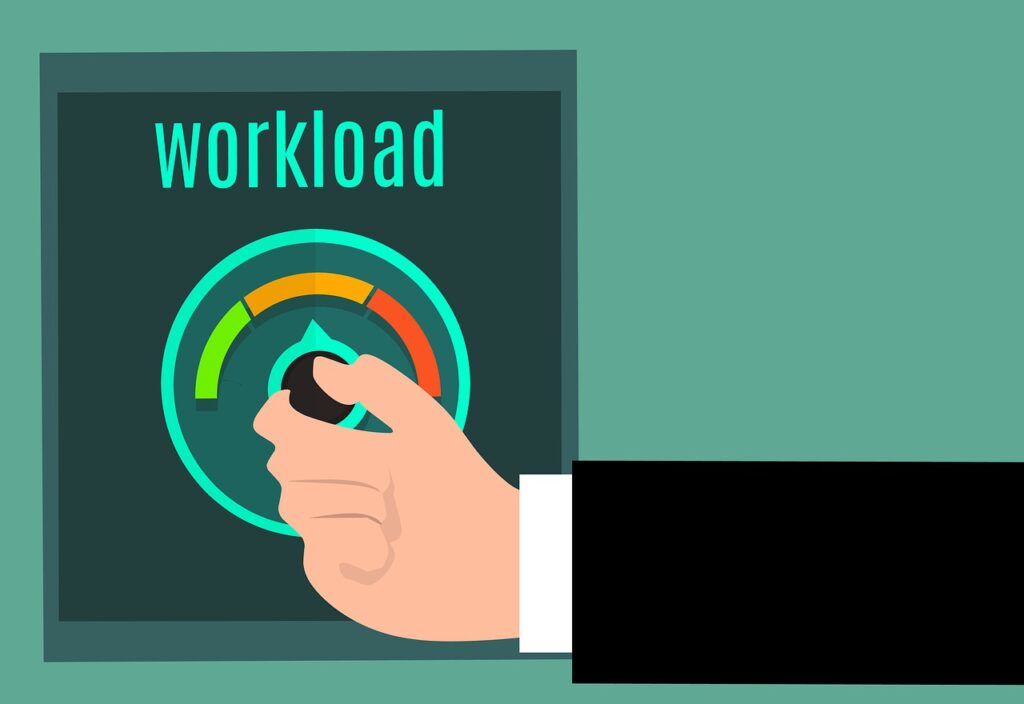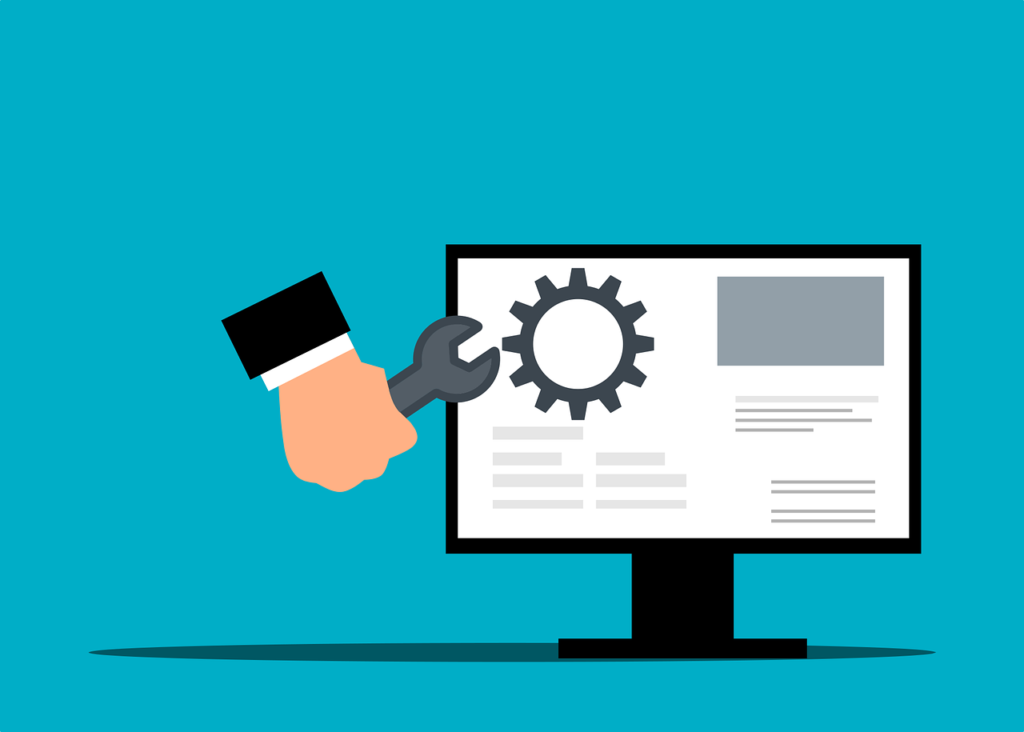A survey conducted among 11,487 tech employees found that 57.16% of employees face burnouts and 42.84% don’t face any burnouts. A separate survey conducted to determine the reason for burnout in the retail workforce concluded 3 main reasons for burnouts:
- 46% said unfair competition
- 29% said unreasonable workload
- 27% said poor management
This study also observed that employee burnout causes more than 50% of annual turnover.
A separate study was conducted to determine the primary source of burnout among tech workers. This survey concluded that the four main reasons for burnout are poor leadership at the peak, along with heavy workload, toxic culture, lack of career growth following the lead to be the primary sources for causing burnouts.
Among the various statistics and surveys conducted, it is found that poor workload management is among the leading causes of employee burnout. The problem with burnout is it brings in more stress, decreases productivity, fails our morale, and affects our health. Most employees feel that their limitations do not allow them to meet the demanding workload. But the continuously demanding workload is taking a toll on the employees, causing high-stress levels and burnout.
Contents
- 1 What is Workload Management?
- 2 Workload Management Skills
- 3 How to Reduce Workload?
- 3.1 Know your Capacity
- 3.2 Prioritize and Plan
- 3.3 Avoid Multitasking
- 3.4 Commit to Realistic Deadlines
- 3.5 Communicate Clearly
- 3.6 Take Small Breaks
- 3.7 Use the Right Technology and Tools.
- 3.8 Allocate the work
- 3.9 Adjust and make changes when necessary
- 3.10 Ensure healthy work-life balance for remote workers
- 4 Closing Words
What is Workload Management?
Workload Management is a systematic way of distributing, organizing, scheduling, and planning various tasks across the team. It involves optimizing all the jobs to ensure timely project completion.

Most people think workload management is an easy process that includes project introduction, capacity planning, task allocation, and completion. But no project works this ideally.
The truth is workload management is a multi-step skill. Workload management skill requires thorough planning, scheduling, and managing various variables of the tasks before the actual task is assigned.
Workload management is a multi-layered success formula that ensures timely project completion and efficiently uses team members’ skills without disruption or stress. Project managers should have intelligent workload management skills.
There are various reasons why workload management is important:
- Workload management ensures timely project completion: Timely project completion is essential to meet the deadlines and avoid any last-minute rushes. By managing the workload and assigning tasks efficiently, you can complete the project on time.
- Workload management avoids employee burnout: As discussed earlier, employee burnout is one of the leading causes of projects failure. By managing the workload, you can prevent employee burnout and increase productivity.
- Workload management ensures proper resource utilization: If the resources are not utilized properly, it leads to wastage and ultimately affects the project budget. By efficiently managing the workload, you can make smaller tasks and use all the resources without waste.
- Workload management balances work and life: A proper balance between work and life is essential for a healthy mind and body. If you cannot manage your workload, it will lead to a work-life imbalance, causing stress and affecting your health.
Workload management Importance and advantages:
- Motivate the team members
- Reduce their stress levels
- Boost their productivity
- Keep the project on track
- Resource management
- Managing time and project schedules efficiently
Workload Management Skills

Workload management skill is the scientific and logical distribution of work according to their priorities. It also involves distributing the work to all the team members fairly according to their abilities and capabilities.
Workload management skills include robust planning, organizing, estimating, scheduling, and tracking work progress. It maintains the right balance between employees and workload demands to meet the clients’ commitments within the time limit.
Some skills that are essential in workload management include:
- Prioritizing: Doing the most important work right away and completing less necessary tasks after.
- To-do list: The to-do list includes all the tasks you need to accomplish until the end of the day.
- Scheduling: Schedule refers to setting a timeline for each task in your to-do lists. Further also assign due dates for various tasks.
- Flexibility: Flexibility is the ability to make changes in the schedule and tasks to meet the fluctuating needs and changing demands.
How to Reduce Workload?
Know your Capacity
Every human has a limited capacity. Know your limits and capacity for working. If you have a lot of work on your plate, communicate with your project manager about the same. Some people feel it difficult to acknowledge their capacity.
Hence they don’t accept defeat and keep working towards their goals while taking heavy workloads and long working hours. This causes a high level of stress, decreases productivity, and affects your health along the way.
Accepting your limits is the first step to gaining control of the situation. If not, you will be piled up with more work, more emails in the inbox, and more unrealistic deadlines. Sometimes saying no is better than dealing with unrealistic workloads.
Prioritize and Plan

Be smart and pick your priorities. Team members often have a long list of to-do tasks aligned. If you are sure you can’t do everything on the list, it is best to prioritize important and urgent tasks to be done first. This is called workload triage, which means doing high-priority tasks first.
Don’t ever get in the trap of doing the most manageable and easy tasks. This may give you the satisfaction of crossing the task from the to-do list but has no long-run benefits when you have an unrealistic list of tasks to follow.
The best way to ensure your workload management is to use the Franklin-Covey method of prioritizing to adjust tasks. This technique includes segregating certain tasks in your to-do list according to their priority and importance.
- Quadrant 1 or A includes Urgent and Important tasks
- Quadrant 2 or B includes Important and non-urgent tasks
- Quadrant 3 or C includes Not important but urgent tasks
- Quadrant 4 or D includes Not important and non-urgent tasks
Now, you have to focus and give your best to complete quadrant 1 and 2 tasks. If possible, then also try to complete the Quadrant 3 tasks. Quadrant 4 is a sector that is to be done after completing the tasks in other quadrants. If not possible, you can also ignore these tasks as it adds to your own workload while bringing very little credit or importance.
Avoid Multitasking
While completing each quadrant task, you will be tempted to do more than 1 task at a time. But try to avoid multitasking as much as possible. We, humans, are meant to focus our attention and concentration on only one thing at one time.

But you may say some people can multitask efficiently, but today studies have shown that multitasking can reduce work efficiency and can even cause damage to your brain. Further, with multitasking, there are chances of low-quality work and several redoing associated with low-grade work.
This all will, in turn, lead to stressed employees and damaged work-life balance because of long hours of redoing work. The bad quality of work shows the remote workers or employees as unprofessional and amateur. The best way is to prioritize and do all-important and urgent tasks one by one.
Commit to Realistic Deadlines

The most common reason for stressed employees in remote working is unrealistic deadlines. Certain Project managers or HR leaders expect you to complete the tasks within the deadlines associated with them. If you accept a deadline, it becomes concrete, and you have to stick to it.
So think before you agree on deadlines and set realistic expectations for yourself, or it will bring an unhealthy work-life balance. Thinking logically before deciding on any deadlines will bring clarity and transparency. Don’t make fake promises to impress anyone; it will only add to your workload.
If the deadlines are already decided, and you feel your deadlines are unrealistic, share them with your leader. Make it clear that you can not achieve this deadline. You can ask to extend the deadlines if possible. If not, ask for additional resources or outsource some work to ensure you complete the tasks on time.
Communicate Clearly
The HR leader or project manager is responsible for drawing the tasks plans and setting the deadlines for the tasks. Communicating clearly about what is expected from the remote employees works wonders in setting expectations on time and the quality of work. Employees should trust the leaders with their grievances and problems of workload. In contrast, the leaders should show maximum support to solve the issues.

Don’t just listen to employees’ workload problems but also give them tips, provide the right resources, and show ways to manage their workload efficiently. Ensure employees have a say in the task’s decision-making process and deadline expectations. Show empathy and help employees facing burnouts due to long working hours.
Effective communication is not just about showing empathy; it is also about helping remote workers draw a plan or demonstrating steps to complete timely tasks.
Take Small Breaks

While having so much work and so many tasks to accomplish, taking breaks is the last thing on your mind. You just want to complete all the tasks as fast as possible. But working straight through the day without any breaks can decrease employee performance employee productivity and make a dent in the efficiency of your work. Most employees take only a lunch break.
It is scientifically concluded that taking small breaks within a day inspires creativity, keeps you from getting bored, and enhances your work efficiency. Encourage team members to take small breaks of 10 minutes within some allocated time intervals.
Team members can walk around, meditate, or drink coffee within this 10-minute break. This will help remote employees evaluate their goals and find a fresh perspective. But ensure that employees are not misusing the mini-breaks given to them.
Use the Right Technology and Tools.

Today, technology has advanced, and you can effortlessly automate your work with the correct integration and right tool. Payroll automation helps the HR leader take care of each team member’s tax filings, deposits, record keeping, and timely payments. Further, you can also use advanced AI to effectively manage your workflow and streamline communication to reduce the workload of team members, remote workers, and employers.
Using other organization tools such as calendars and emails helps you schedule and remember the appointments and deadlines. Scheduling your entire day and breaks in the calendar enables you to understand your time on various tasks.
It also helps increase employee engagement with the shared calendars feature that aids you in sharing your schedules with other team members. Another essential tool that helps reduce your workload is project management software. Project Management software assists each team member, from task allocation to workload management and many more things.
Allocate the work
In corporations, the high performers are often given the most difficult tasks. The project managers and leaders find it more reliable to allocate the work to good-performing employees.
But this can lead other team members to lose interest or cause a tense atmosphere at work. Also, the high-performing team members getting all the tasks are piled up with the workload. These employees may burn out or feel stressed in just a matter of time.
Hence, it is of utmost importance to fairly distribute the work to all team members with detailed roles and responsibilities. This will help all the employees stay on the same page while making the task allocation process less complicated. While allocating work, recognize the potential strengths of each employee and provide training or experience where necessary.
Adjust and make changes when necessary
After you plan and allocate a task, you may have to make some changes along the way. This is especially true for certain projects because managers have to be flexible enough to make changes on the go due to unforeseen conditions and risks. This can cause work overload, stress, and decreased employee productivity.
One way to tackle this problem is to have effective communication channels to inform the team members about new advancements. Managers can have videoconferencing or stand-up meetings to save time. Stand-up meetings are short team meetings to take brief updates from the team members. This helps ensure transparency, clarity, accountability, and reduced bottlenecks.
Ensure healthy work-life balance for remote workers

A healthy work-life balance includes a proportionate balance between your work and life. The three things that indicate you have a healthy work-life balance are; meeting deadlines while having time for friends and family, getting enough time to sleep, and not thinking about work when you are home.
An unhealthy work-life balance causes increased stress, depression, absenteeism, and lack of productivity. All this can cause companies a lot of money.
Business success depends on each team member and employee working in the company. If they are stressed, burnout or have an unhealthy work-life balance, it can indirectly affect the business expenses.
Closing Words
Workload management is not just the responsibility of employees, but it should be a joint venture by employees and employers. Employers should provide clear guidelines, set realistic deadlines, encourage small breaks and invest in technology when necessary. And employees should ask for help when necessary, learn to say no sometimes, limit overtime and practice prioritizing. Investing in the structural mechanism and technologies to simplify the employee work and help them from getting overwhelmed will reap returns in business profitability.
Have you tried any of these methods to reduce your employee’s workload? Check out our list of top creative project management tools to help get the job done.



